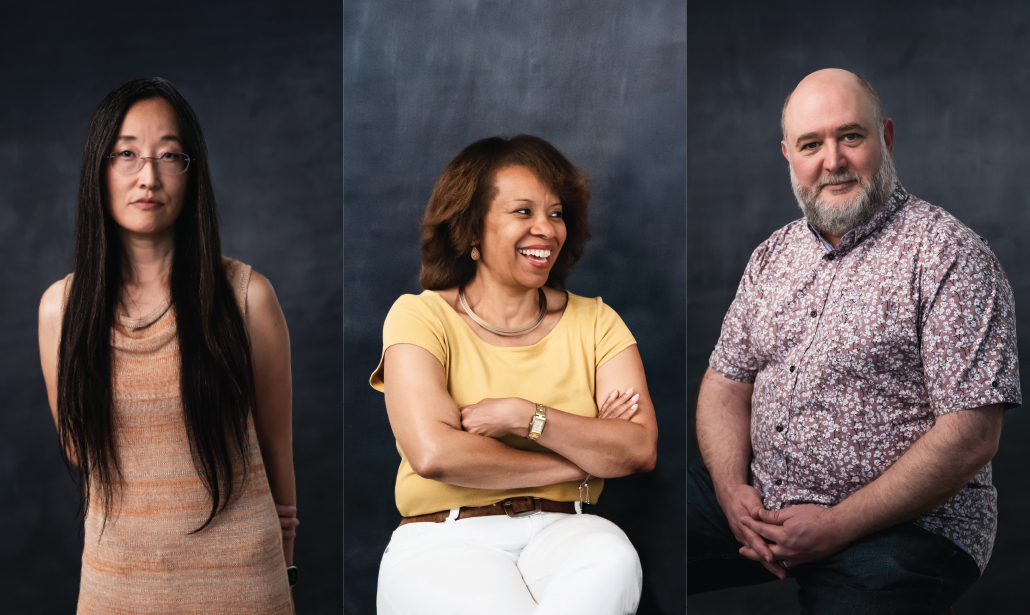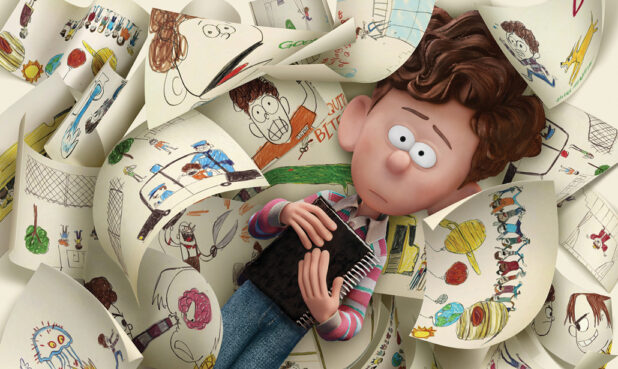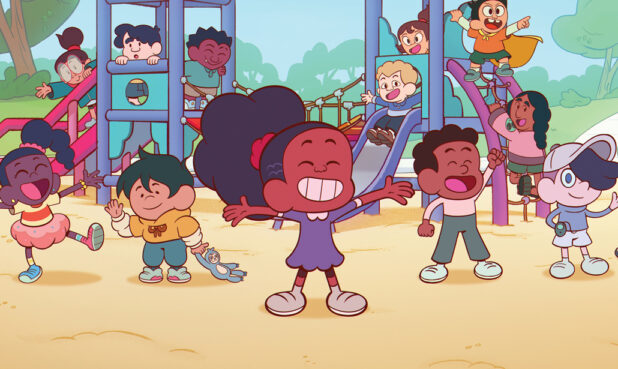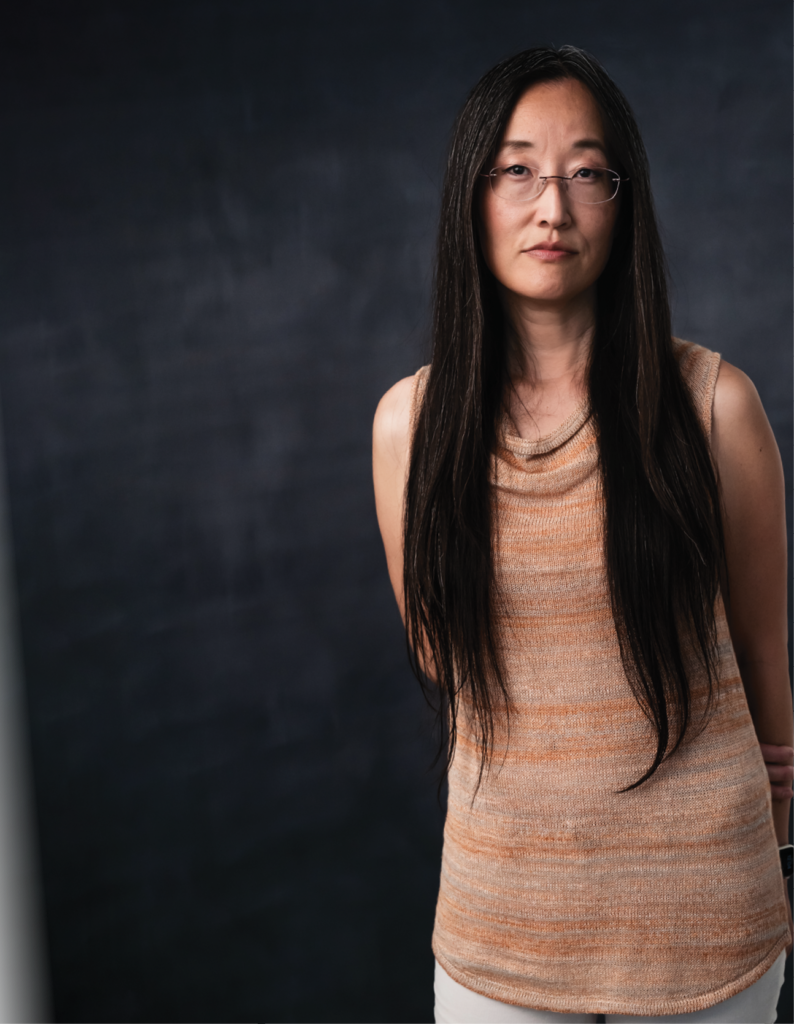
Personal Journey
Jennifer Yuh Nelson
During her last semester at Cal State Long Beach, driving her mom’s Hyundai Excel to a part-time Production Assistant gig at Jetlag Productions in Woodland Hills, Jennifer Yuh Nelson wasn’t thinking about a career in animation. She was an illustration major who wanted to be a live-action storyboard artist. But when she was offered the job through her sister, she was eager to learn how an office worked.
It wasn’t glamorous. She made copies and helped clean model packs. In her small copy area, she also doodled on Post-its. Passing by, the producer saw them, leading to Nelson drawing animals and monsters for a direct-to-video children’s series. When the producer moved to Hanna-Barbera, she followed, taking a job as a character design clean-up artist. Then came a storyboard opening, and that, she says, “is how I started doing storyboards for animation.”
Fast-forward and Nelson is directing 2011’s Kung Fu Panda 2—the first female to solely direct a full-length animation feature film for a major studio. The path that took her there has been one of overcoming challenges and leaning into strengths.
“To learn you have to be able to fail, you have to experiment, you have to do things that haven’t been done before.”—Jennifer Yuh Nelson
“I’m not the kind of person that blows a bugle for my own self all the time,” Nelson says. “I had to learn how to physically advocate for myself or at least tell people, this is what I want to do.” At Hanna-Barbera, she told the producer she wanted to do storyboards, and “that’s why they knew to give me a test of a storyboard sequence.”
Nelson also emphasizes the importance of adapting in the face of a constantly changing industry. She loves working on the computer with digital tools, but “a lot of the artists I was with, some of them couldn’t make the transition to full digital art so they [aren’t] around anymore. It’s also a matter of globalization. How do you remain relevant when basically you’re competing with everyone on our planet?”
Nelson says she addresses these challenges by always being open to learning because “the jobs change, the job categories change, audience tastes change, so you [can’t just say], okay, I’m good enough at my skill and I can keep doing it for the rest of my career. You have to constantly reinvent things that make you excited about the job and your part in it.”
One way Nelson does this is by taking jobs she finds interesting. Taking a job that she doesn’t connect with wouldn’t be fair, she says. “It would make me look bad, it would make the employer unhappy. There are just some jobs I’m not cut out for.”
Outside of work, Nelson spends time and effort seeking better ways of doing things and pushing her own storytelling, and she says that most of the jobs she has gotten have been because of her personal projects. “It’s really hard to learn on the job for many reasons,” she says. “To learn you have to be able to fail, you have to experiment, you have to do things that haven’t been done before. [You can’t just walk into work and say] today I’m going to fail. But with your own projects, the only client you’re trying to satisfy is your personal journey. You don’t have to show it to anybody. You don’t have to please anybody. At work you’re chasing a style, a sensibility, or demands of your employer whose tastes have been formed well before yours. There are literally no parameters to your own personal project.”
When talking about her projects, Nelson emphasizes the distinction between those created in the hope of being sold and those created just for learning’s sake. With the former, “you’re still trying to please somebody else,” she says. But when it’s just for you, you can do “something that you’re scared to death of doing or that you think you’re really bad at. It’s very present oriented, because you may not get better at it for a long time, but you’ll discover something in the process.”
When asked if she’s ever wanted to throw in the towel, Nelson says: “Anyone who has directed a feature animated film understands wanting to give up. You’re looking at years and years of the tense stress of pressure, ups and downs, crews getting demoralized and happy and then demoralized again. You have to [use] all the coping mechanisms you have in your reservoir for surviving a feature animated process.”
So, how does she push through? “[A project] is not a reflection of me. It’s something I’m given guardianship over,” she says. “You are responsible for it. It’s not like you can give up and say, I’ve got this kid and I’m tired and I’m not going to take care of it anymore. You have to see it through. Suck it up. If you give up, you’re hurting the project. You’re limiting its ability to be seen out in the world. To have other people enjoy it.”
This speaks to Nelson’s generous attitude about her place in the world of animation—a place she feels has been empowered by the community she works in. “There’s so much kindness,” she says. “There’s so much understanding of I was there, I know how hard it is, I was given a leg up by somebody—so everyone’s paying it forward. I think that’s unique to our group and something to be really cherished.”
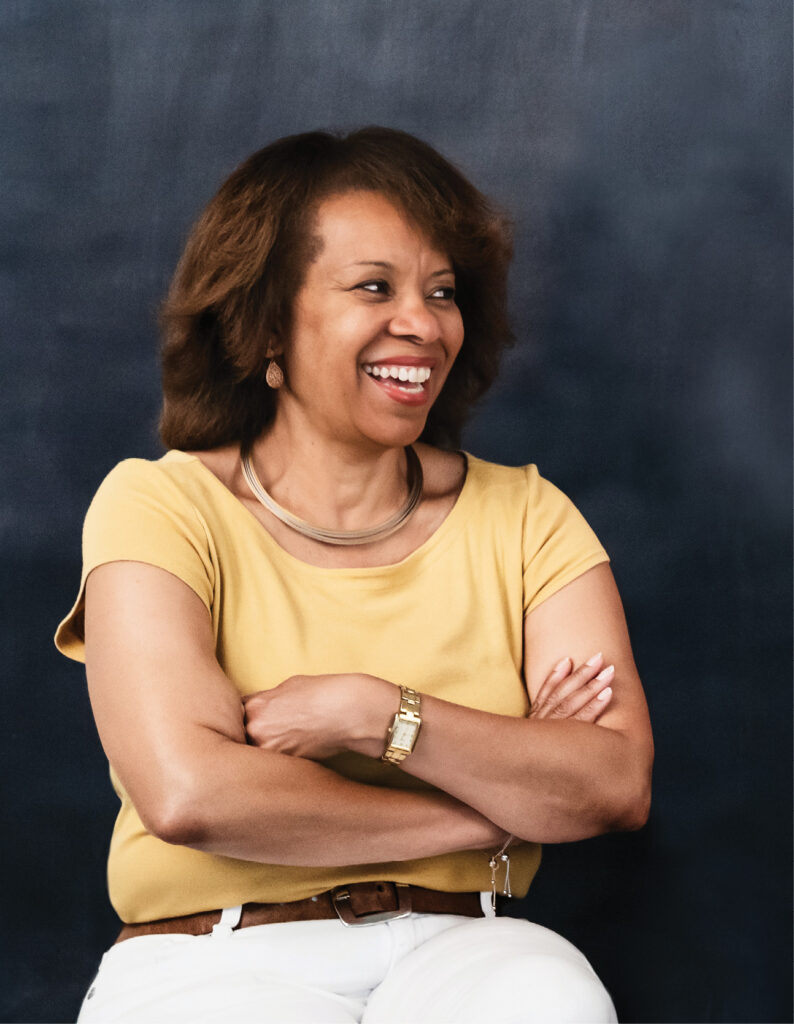
Priceless Education
Shavonne Cherry
As a child, Shavonne Cherry loved animals and Saturday morning cartoons. “I started to draw my own versions—invent my own stories, invent my own characters, and invent their worlds,” she says. “That got me interested in the process of animation and considering it as a career.” But when she graduated from art college in the mid-1980s, she was a woman of color entering a white, male-dominated profession. Fortunately, she had a strategy. She would start as a cel painter, a job traditionally held by females. “I knew that was going to be the easiest way to get my foot in the door,” she says.
By 1986, Cherry had made enough connections to get a job doing assistant model designs and model clean-up on the first season of Flintstone Kids. She worked at various boutique studios doing mainly commercial work, but her game plan paid off as she moved up into animation positions, eventually landing in character layout and then storyboards.
You name a big show from the past 30 years, and Cherry has probably worked on it. Tiny Toon Adventures. The Looney Tunes Show. Family Guy. The Proud Family. The Simpsons. It’s a list that goes on—and one whose eclecticism taught her a valuable lesson.
“I had to think differently about every artistic task I was given,” she says. “I had no choice. Every show is different, so I had to adjust what I did per show.”
Having gotten her start in Disney, Hanna-Barbera, and Warner Bros. styles, Cherry recalls how difficult it could be at times to switch gears. “You couldn’t bring a Disney thought process into The Simpsons,” she says. “There is a way of drawing that you have to lend yourself to. There’s something underneath that gives those characters their personalities and makes them come across the screen the way they do. It’s really hard to unlearn certain things that you can do as an artist. [That’s why] I think flexibility is very important.”
“… it doesn’t matter how old you are. How long you’ve been in the business. It’s all about the idea.”—Shavonne Cherry
Equally important to Cherry is self-care. She remembers what it was like to be a new artist who wants to give 150% “just to get the project done and let people know that you’re a hard worker and dedicated. But it came with a price—forgetting what it was like to have a life.” She wants those coming up after her to know that “it’s okay to shut down and go outside and get some sunshine and walk around.”
She also advocates for being kind to one’s self during the down times. For her this meant moments when she wasn’t working, asking herself: “Do I suck that badly? Is it because I won’t push myself to meet impossible deadlines?” Over time she learned to “take a deep breath and take the advice of good friends and family who kept me from falling into that dark abyss [where] we’ve all teetered around the rim.”
Because that abyss can exist even while a person is working, Cherry advises “not taking criticism personally. Listen to your bosses, regardless of if you think they’re wrong. [Don’t] be afraid to suggest alternatives before you just do what you think is right, [something] you’ll eventually regret later. Be a team player.”
For Cherry one of the joys of being on a team is embracing the opportunities to learn from those who came before her. She savors her experience working on Tiny Toon for that very reason. “The atmosphere!” she says. “I was among the most talented people in the business on a very popular show that everybody was talking about at that time. We were free to be ourselves. Nobody put constraints on what we were doing. There was nothing like it.”
First doing freelance as a storyboard clean-up artist and then joining the staff as a character/model clean-up artist, Cherry took full advantage of the veterans she worked with: “We had their undivided attention. We wanted to learn. Holy cow! We listened and they told us amazing stories of working with people that had either passed on or already retired. And now [they] were teaching us how to be better at our crafts.”
Cherry longed to animate in some capacity, and when one of the veteran animators suggested that she do character layout, she admitted she didn’t know how. This opened the door to an invaluable education as he showed her the fundamentals. “Just being able to have somebody look over your shoulder and say, don’t do it like this, do it like that,” she says. “[And then] oh, you’ve got it, you don’t need my help. It’s priceless, what I have as an education.”
While Cherry has kept up with the times and mastered all the technology necessary to keep a career going, she occasionally cel paints old favorite cartoons for fun and relaxation. She also enjoys working on her own characters she’s created. And as can happen with labors of love, this led to an idea she believed would make a good show.
Combining the concept of talk and cooking shows, Cherry, her husband, and two food professionals made an animatic. Having formerly worked for the Executive Producer of Cartoon Network’s Cartoon Cartoons shorts program, she had the opportunity to reach out to him. “Fortunately, [he] was generous enough to hear my idea and saw merit in it,” she says. He encouraged her to submit, and her project was chosen to be turned into a pilot.
Cherry’s takeaway is that “it doesn’t matter how old you are. How long you’ve been in the business. It’s all about the idea. It shouldn’t matter if you’re considered a veteran or newbie. It should be, can you make people tune in?”
When asked if she still loves her work, Cherry replies: “Very much so. Especially how long it’s taken me to get to where I’m at right now. I can see myself going until I can’t do it anymore.”
As for how she’ll do that, she plans to follow her own advice: “Get out there and just be brave and try to let people know who you are. The only way to do it is to do it.”
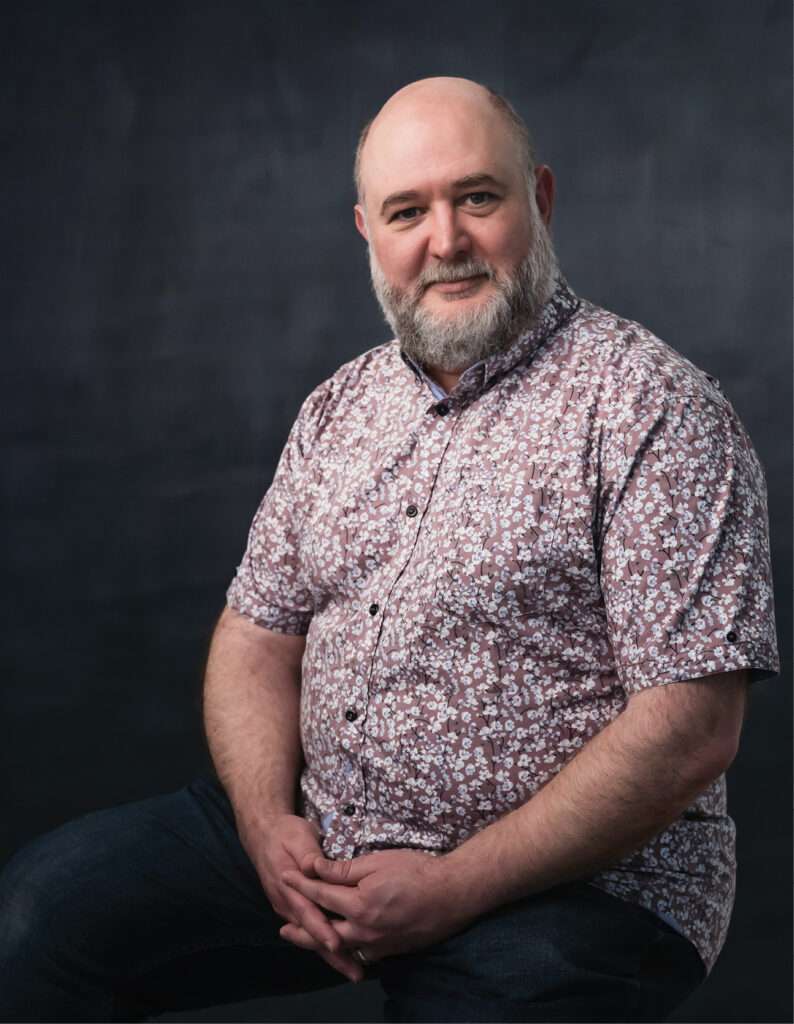
Teach Thyself
James Baxter
In the U.K. in the 1980s, James Baxter assumed he would have an animation career in London. Hollywood hadn’t established British outposts yet, and he figured he’d most likely work on commercials. Then Who Framed Roger Rabbit came to town. Baxter quit art school for the opportunity to work on the movie.
The Roger Rabbit crew included several Disney animators from California. One of them, Andreas Deja, recommended that Baxter head to L.A. and try to get a job. By age 21, Baxter’s animation career was off and running as he started work in the U.S. as a character animator on The Little Mermaid.
For Baxter the excitement of coming to America paled compared to the chance to “really go to the source,” he says. “I think more than anything, it was about the opportunity to be able to learn the craft at a place where the knowledge was available. I went to Disney so I could get to the animation research library. So I could get those drawings out of the morgue and flip through them and try and understand how they were done.”
Baxter knows that his approach to learning isn’t a conventional one: “I’m a little weird in that I didn’t seek out my elders that much. I don’t think it’s bad advice. It’s great advice, actually. But I’m pretty autodidactic. I tend to learn by osmosis rather than by sitting down and going, how do you do this? I do it by just analyzing the work.”
This doesn’t mean he’s a lone wolf, though. One of things he advises for those farther along in their careers is connecting with younger people in the industry. “When I started reaching out to younger creators whose work I admired, creators 10 and even 20 years my junior, it opened up whole new avenues for me,” he says. “[You can’t] keep yourself insular and say, oh, all I’ve done is this and that’s all I’m going to continue to do.”
“Whether it’s painting or designing or animating or writing or storyboarding, get as good at your craft as you possibly can get. That’s going to carry you.”—James Baxter
Another way he avoids resting on his laurels is finding the lesson in each project. Leading a crew of animators at the age of 23 on the main character in Beauty and the Beast, he learned confidence. Doing CG on How to Train Your Dragon taught him to appreciate working on a film with a really good story.
Then there are the lessons Baxter proactively sought. “I went into Spirit: Stallion of the Cimarron intentionally with this idea of trying to learn something. Because I knew I didn’t know all I should know about quadrupeds,” he says. He was guided by something he’d learned about the making of Bambi in 1940: “[That crew] was the one that led the studio for the rest of their careers. It was the animators and artists that went through that boot camp of how to do that kind of animation, that level of study, that set them up for success in Lady and the Tramp, 101 Dalmatians—anything that had an animal in it from [then] on, they were masters. I looked at Spirit as my opportunity to do that deep dive.”
As his career continues skyward, there are times when things can feel stale, and Baxter says it’s important to “get back to that core passion and that core inspiration that got me into [animation] in the first place.” He does this in a few ways, including seeking out people he wants to work with. “For me it’s as much about the other artists I want to be around and learn from and collaborate with as it is the movies themselves,” he says. When he moved from Disney to DreamWorks for example, it was because he wanted to work with the French animators at that studio. And while leaping from studio to studio isn’t always easily done, he has a more achievable suggestion. Reenergize yourself by simply going back and watching the shows that inspired you to get into the industry in the first place. His go-to? Bambi.
While Baxter acknowledges that everyone has their own approach to learning and working, there are two qualities he believes every single artist in the animation industry needs. Number one: “Be good at what you do. There’s innate talent, but there’s also the passion to do the work,” he says. “Whether it’s painting or designing or animating or writing or storyboarding, get as good at your craft as you possibly can get. That’s going to carry you.”
While he admits that it sounds overly simple, his second piece of advice is to “be nice to work with. Animation is a team sport. It has to be collaborative. Be a good colleague, be generous artistically, just [don’t be] a pain. It’s actually really important. I learned that more over time. I was a little bit grumpy at the beginning because I was very idealistic, and things would upset me. I learned to deal with that better as I got older and still stand up for what I believed in.”
As a result, Baxter feels fortunate to have what he calls “a consistent career” in a field that continues to hold him in its sway after nearly a quarter of a century. “I enjoy the magic trick of it,” he says with the passion of someone just starting out. “I like the medium too much to want to do anything else.”
